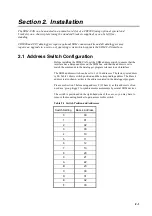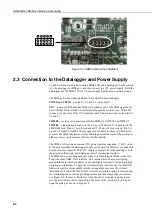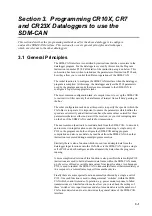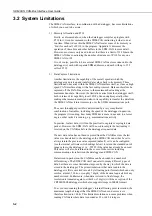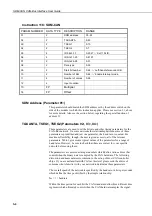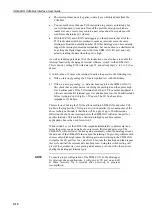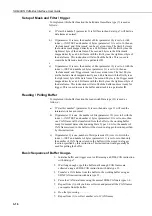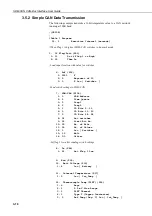
SDM-CAN CAN-Bus Interface User Guide
Instruction 118: SDM-CAN
PARAM. NUMBER
DATA TYPE
DESCRIPTION
RANGE
01: 2
SDM
address
00..33
02: 2
TQUANTA
0-63
03: 2
TSEG1
0-15
04: 2
TSEG2
0-7
05:
4
ID bits 0-10
0-2047 ‘--’ Set 11bit ID.
06:
4
ID bits 11-23
0-8191
07:
2
ID bits 24-28
0-31
08: 2
Data
type
0-33
09:
2
Start bit number
0-64, ‘--’ Left-hand referenced LSB.
10:
2
Number of bits
0-64, ‘--' Enable Interrupt mode.
11:
4
Number of values
0-99
12: 4
Input
Location
13: FP
Multiplier
14 FP
Offset
SDM Address (Parameter 01:)
This parameter should match the SDM address set by the address switch on the
side of the module to which this instruction applies. Please see section 2.1, above,
for more details. Also see the section below, regarding the special function of
address 33.
TQUANTA, TSEG1, TSEG2 (Parameters 02:, 03:, 04:)
These parameters are used to set the bit rate and other timing parameters for the
CAN-Bus network. On some networks the relationship between some of these
parameters is predefined and just one parameter, the baud rate, is quoted. For
maximum flexibility, though, the user is given access to all of the relevant
parameters. Table 3 gives some typical values of the parameters for a range of
baud rates. However, be sure to check that these are correct for your specific
network before using them.
The parameters are entered as integer numbers which define various times that
control when the binary data is sampled by the CAN hardware. The following
discussion and nomenclature is common to the set-up of most CAN controller
chips. If you are not familiar with CAN at this level please seek the advice of
someone who is familiar with your network to determine these parameters.
The overall speed of the network is specified by the baud rate, in bits per seconds,
which define the time per bit (
t
bit
) by the simple relationship:
t
bit
= 1 / baudrate
Within the time period for each bit the CAN standards define three different time
segments which ultimately control when the CAN hardware samples the signal.
3-4




